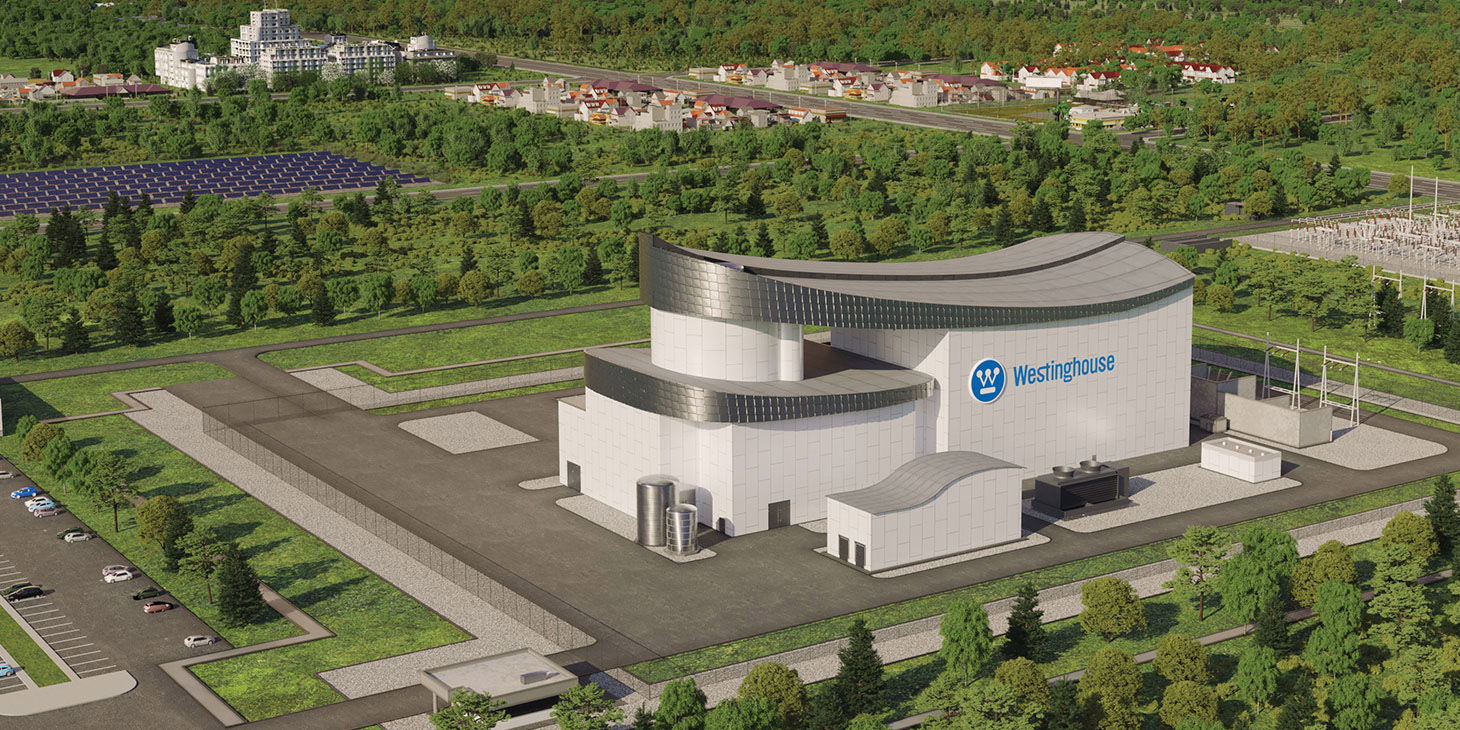
Rendering of a Westinghouse AP300 plant. (Image: Westinghouse)
At a virtual press conference this morning, Westinghouse Electric Company president and chief executive officer Patrick Fragman announced the launch of the AP300 small modular reactor, a 300-MWe, 900-MWth single-loop pressurized water reactor based on the company’s larger AP1000 unit. Fragman was joined at the conference by David Durham, president of energy systems for Westinghouse, and Rita Baranwal, the firm’s chief technology officer. The company also released a short video introducing the AP300 on YouTube.
According to a Westinghouse press release, the AP300 SMR will utilize the technology of the AP1000, including major equipment, structural components, passive safety systems, fuel, and I&C systems. “The AP300 will bring to bear a mature supply chain, constructability lessons learned, fast load-follow capabilities, and proven O&M procedures and best practices from 18 reactor-years of safe AP1000 operations,” the release stated.
Currently, there are four operating reactors utilizing AP1000 technology in China, with six more under construction. Also, two AP1000s have been built at the Vogtle nuclear plant in Georgia (Units 3 and 4); Unit 3 is expected to enter commercial service later this month or next, and Unit 4 is targeted to be on line by the fourth quarter of 2023 or first quarter of 2024.
The pitch: “[The AP300 SMR is] leveraging a proven technology, the AP1000, a very efficient and reliable technology which is already in operation around the world,” said Fragman at the press conference. “It’s obviously also using the DNA of the AP1000 in terms of technology, which is full passive safety, which has unique advantages in terms of robustness of the safety case, simplicity of the design, with implications in terms of costs and time to construct. And obviously, an ease of deployment because of the AP1000 already being deployed. The AP300 SMR will leverage the existing supply chain, the existing design, the existing licensing pedigree. . . . The licensing building blocks can be directly reused for finishing the AP300 SMR licensing.”
AP1000 technology has regulatory approval in the United States, Great Britain, and China, as well as compliance with European Utility Requirements standards for nuclear power plants.
Fragman also said that the AP300’s smaller safety-related footprint would reduce construction, operating, and maintenance costs. In response to a reporter’s question regarding the likely impact of the AP300 on the SMR market, he termed the new unit “a game changer.”
The plan: Westinghouse intends to complete the licensing of the new SMR by 2027, with construction of an initial unit completed by 2033. “Ten years from now, the first AP300 SMR will effectively deliver its first power to the grid,” Fragman said. “We target an overnight cost of $3,400 per kilowatt, which means a plant which is expected to have a capital cost, overnight, of less than a billion dollars.”
To lead the effort, the company has named Baranwal to the position of senior vice president in the energy systems business unit. An ANS member, Baranwal is the former assistant secretary of nuclear energy at the Department of Energy and has decades of experience in the nuclear energy sector, including as director of the Gateway for Accelerated Innovation in Nuclear initiative at Idaho National Laboratory.
Asked about applications for the AP300 SMR beyond power generation, Baranwal mentioned district heating, hydrogen generation, and desalination of water.